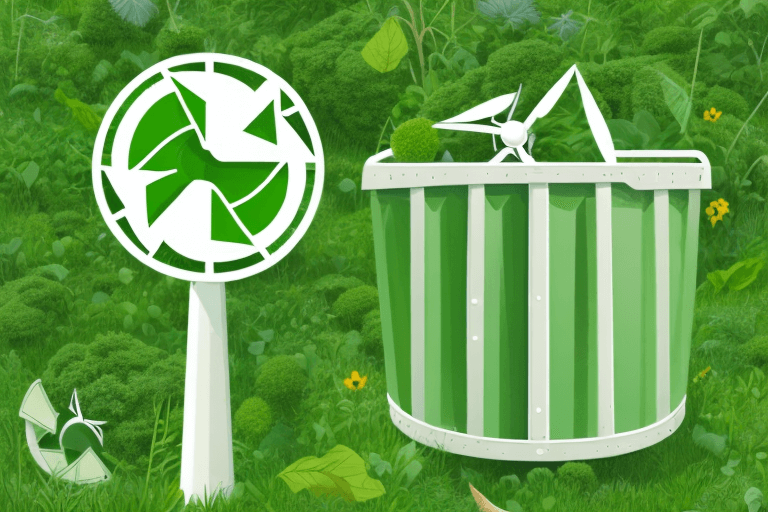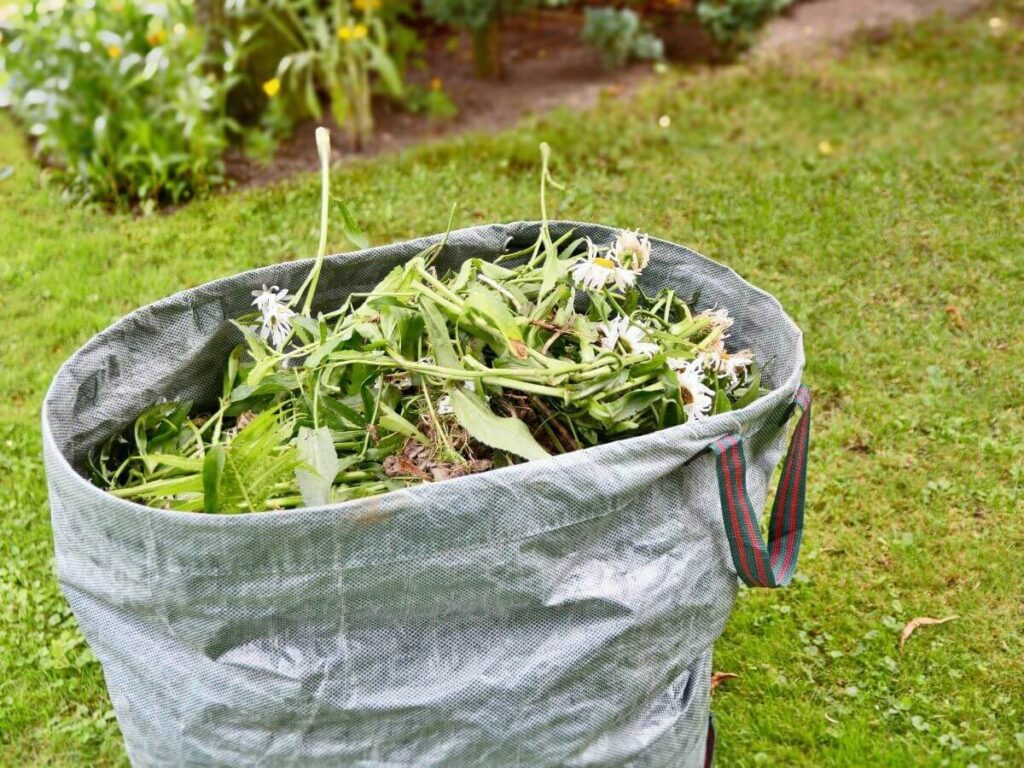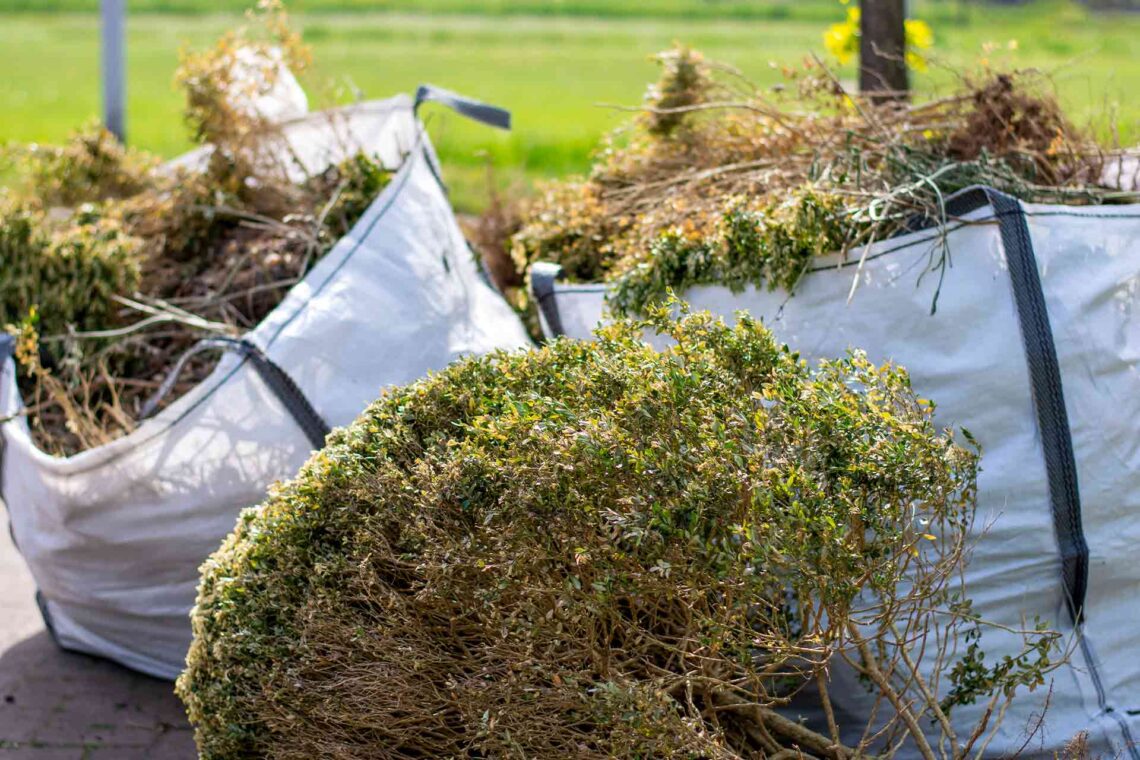Green waste refers to organic waste materials that are biodegradable, such as grass clippings, leaves, twigs, and kitchen scraps. Proper management of green waste is crucial for the environment as it reduces landfill waste and greenhouse gas emissions. In this article, we will explore the importance of sustainable disposal methods for green waste and discuss various techniques for handling it effectively.
Understanding Green Waste
Before delving into the principles of sustainable disposal, it is essential to define what constitutes green waste removal. Green waste primarily consists of organic materials derived from plants and other natural sources. It is important to note that not all organic waste is classified as green waste. While green waste can be composted or recycled, other types of organic waste might require different disposal methods.
Defining Green Waste
The term “green waste” encompasses various organic materials, including grass clippings, leaves, branches, and plant trimmings. Additionally, kitchen scraps, such as fruit and vegetable peels, coffee grounds, and eggshells, are also considered green waste. These materials are biodegradable and can be transformed into valuable resources through proper management.
Grass clippings, for example, are a common form of green waste generated during lawn maintenance. Instead of being thrown away, these clippings can be collected and used as mulch or added to compost piles. Mulching with grass clippings helps retain soil moisture, suppress weed growth, and provide nutrients to the soil as they break down. Composting grass clippings, on the other hand, creates nutrient-rich compost that can be used to improve soil fertility in gardens and agricultural lands. Click here to get about turning green waste into gold.
The Importance of Green Waste Management
Properly managing green waste is crucial for several reasons. Firstly, it helps to reduce the amount of organic waste that ends up in landfills. When organic waste decomposes in landfills, it produces methane, a potent greenhouse gas that contributes to climate change. By diverting green waste from landfills, we can significantly reduce methane emissions and their impact on the environment.
Furthermore, green waste management plays a vital role in promoting sustainable practices and resource conservation. Instead of treating green waste as a waste product, it can be viewed as a valuable resource that can be reused or recycled. Adopting sustainable disposal methods for green waste, such as composting and recycling, not only reduces environmental impacts but also creates economic opportunities.
Composting green waste, for instance, not only helps in waste reduction but also produces nutrient-rich soil amendments. These amendments can enhance soil health, increase water retention capacity, and improve plant growth. By incorporating compost made from green waste into agricultural practices, farmers can reduce their reliance on synthetic fertilizers and promote sustainable farming methods.
Recycling green waste is another effective way to maximize its value and minimize waste. Through recycling processes, green waste can be transformed into mulch, which is widely used in landscaping and gardening. Mulch helps conserve soil moisture, suppress weed growth, regulate soil temperature, and prevent erosion. Additionally, green waste can also be converted into biomass fuel, which can be used to generate renewable energy, reducing our dependence on fossil fuels.
Moreover, advancements in technology have opened up opportunities for the production of bio-based products from green waste. These bio-based products can range from bioplastics to biofuels, offering sustainable alternatives to conventional products derived from fossil fuels. By utilizing green waste as a feedstock for bio-based products, we can reduce greenhouse gas emissions, promote circular economy principles, and contribute to a more sustainable future.
The Principles of Sustainable Disposal
To ensure sustainable disposal of green waste, it is essential to follow three key principles: reducing, reusing, and recycling.
Reducing Green Waste
The first step towards sustainable disposal is to minimize the generation of green waste. This can be achieved by employing practices such as grasscycling, which involves leaving grass clippings on the lawn instead of collecting them. By doing so, the nutrients in the clippings are returned to the soil, reducing the need for chemical fertilizers. Additionally, proper plant maintenance and pruning techniques can help reduce the amount of green waste generated. By regularly trimming plants and trees, you can prevent excessive growth and the need for large-scale removal.
Another effective way to reduce green waste is by practicing water-wise gardening. By using efficient irrigation methods, such as drip irrigation or installing rainwater harvesting systems, you can ensure that plants receive the right amount of water without wastage. This helps in maintaining healthy plants, reducing the need for excessive pruning or removal of dead plants.
Reusing Green Waste
Reusing green waste involves finding alternative uses for it instead of sending it to the landfill. This not only reduces the environmental impact but also provides additional benefits for your garden or landscape.
For example, grass clippings can be used as mulch to retain moisture and suppress weed growth in gardens. By spreading a layer of grass clippings around your plants, you can create a natural barrier that helps retain soil moisture, reducing the need for frequent watering. Additionally, the clippings act as a natural weed suppressant, preventing weed growth and reducing the need for chemical herbicides.
Similarly, fallen leaves can be shredded and used as a protective layer for plants during the winter months. This layer of leaves acts as insulation, protecting the plants from extreme temperatures and frost. As the leaves decompose, they also enrich the soil with organic matter, improving its fertility and structure.

Recycling Green Waste
Recycling green waste involves transforming it into valuable resources. Composting is a widely practiced method of recycling green waste. Home composting systems can be used to turn kitchen scraps and yard waste into nutrient-rich compost. Composting not only reduces the amount of waste sent to landfills but also provides a free source of organic fertilizer for your garden.
Municipalities also provide green waste collection services that recycle it on a larger scale. The collected green waste is taken to specialized facilities where it is processed into compost or mulch. This recycled organic matter is then made available to the public for use in gardens, parks, and landscaping projects. By utilizing these services, you can contribute to the circular economy and support sustainable waste management practices.
Furthermore, some waste facilities accept green waste and process it into biomass fuel. This recycling process diverts green waste from landfills while creating useful products that can be utilized by various industries. Biomass fuel derived from green waste can be used to generate heat and electricity, reducing the reliance on fossil fuels and contributing to a greener energy mix.
In conclusion, by following the principles of reducing, reusing, and recycling green waste, we can significantly reduce the environmental impact of waste disposal. These practices not only benefit the environment but also provide numerous advantages for our gardens, landscapes, and communities.
Techniques for Proper Green Waste Disposal
Properly disposing of green waste is essential for maintaining a clean and sustainable environment. Fortunately, there are several techniques available that cater to individual preferences and available resources.
Composting at Home
Home composting is a convenient and eco-friendly way to manage green waste. By creating a compost pile or using a compost bin, organic materials can decompose naturally, transforming into nutrient-rich compost. This process not only reduces the amount of waste sent to landfills but also provides a valuable resource for enriching soil in gardens and plant beds.
When engaging in home composting, it is important to follow proper composting practices. Maintaining the right balance of carbon-rich (browns) and nitrogen-rich (greens) materials is crucial for facilitating the breakdown of organic waste. Browns include items such as dry leaves, wood chips, and straw, while greens consist of grass clippings, fruit and vegetable scraps, and coffee grounds. Regularly turning the compost pile and ensuring adequate moisture levels will help accelerate the decomposition process.
Green Waste Collection Services
For those who prefer a more convenient option, many municipalities offer green waste collection services. These services allow residents to dispose of their green waste separately from regular trash, ensuring it is properly managed. The collected green waste is then transported to specialized facilities where it can be composted or recycled on a larger scale.
By utilizing green waste collection services, individuals contribute to the overall reduction of waste sent to landfills. Additionally, the composted green waste can be used by local farmers, landscapers, and gardeners, providing a sustainable source of nutrients for plants and crops.

Disposal at Local Waste Facilities
If home composting or green waste collection services are not available or feasible, another option for green waste disposal is to take it to a local waste facility that accepts organic waste. These facilities are equipped with specialized equipment to efficiently process green waste.
Depending on the facility, the green waste may undergo various processes. Composting is a common method, where the waste is carefully managed to facilitate decomposition. The resulting compost can then be used for landscaping, agriculture, or horticulture purposes. In other cases, the green waste may be transformed into mulch, which is widely used for weed control and moisture retention in gardens and parks. Some waste facilities even convert green waste into biomass fuel, contributing to renewable energy production.
By utilizing local waste facilities, individuals ensure that their green waste is properly managed and diverted from landfills. This not only reduces the environmental impact but also supports the development of sustainable waste management practices in the community.
The Environmental Impact of Green Waste Disposal
Benefits of Sustainable Disposal
Implementing sustainable disposal methods for green waste can have several environmental benefits. By diverting green waste from landfills, we reduce the production of methane, a potent greenhouse gas. Additionally, recycling green waste results in the creation of valuable resources such as compost, mulch, and biomass fuel, reducing the need for synthetic fertilizers and non-renewable energy sources.
Consequences of Improper Disposal
Improper disposal of green waste can have detrimental effects on the environment. When green waste is sent to landfills, it decomposes anaerobically, producing methane gas. Methane is a significant contributor to global warming and climate change. Additionally, the transportation of green waste to distant landfills consumes fossil fuels, further contributing to carbon emissions.
Policies and Regulations on Green Waste Disposal
Local and National Policies
Many local and national governments have implemented policies and regulations regarding the management of green waste. These policies often include guidelines for proper disposal techniques and may even require mandatory recycling of green waste. Familiarize yourself with the regulations in your area to ensure compliance and contribute to sustainable waste management.
International Green Waste Management Standards
Beyond local and national policies, there are international standards and best practices for green waste management. Organizations such as the International Organization for Standardization (ISO) provide guidelines for sustainable waste management practices, including those related to green waste. These standards aim to promote global environmental sustainability and encourage the adoption of responsible waste management practices on a larger scale.In conclusion, properly handling green waste through sustainable disposal methods is essential for environmental conservation. By understanding the principles of sustainable disposal and employing various techniques such as composting and recycling, we can minimize the impact of green waste on landfills and reduce greenhouse gas emissions. Additionally, complying with local and international policies and regulations on green waste management further contributes to sustainable waste management practices. Let us all play our part in preserving the environment by responsibly managing our green waste.
